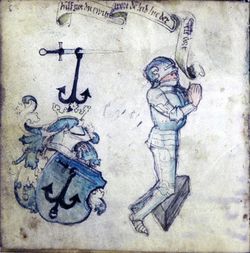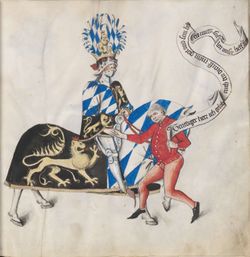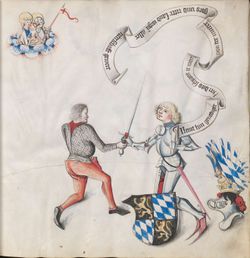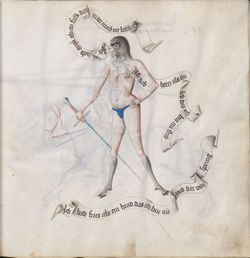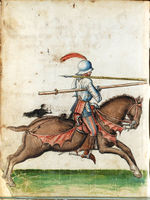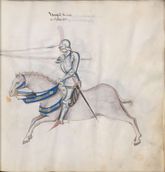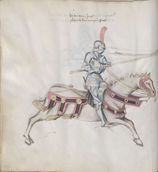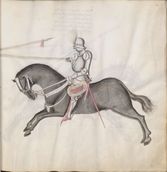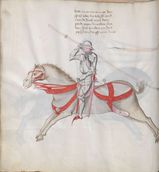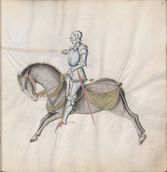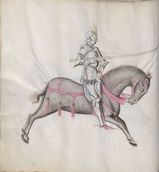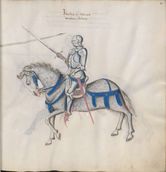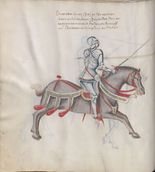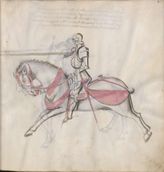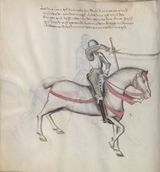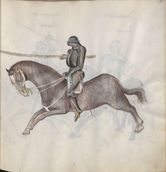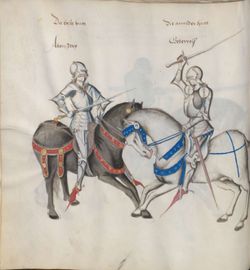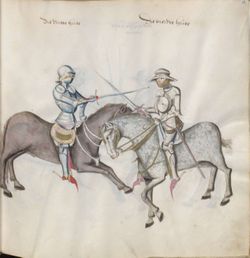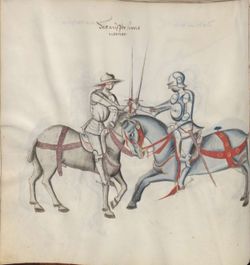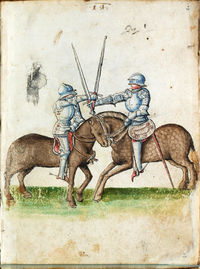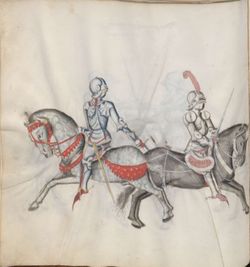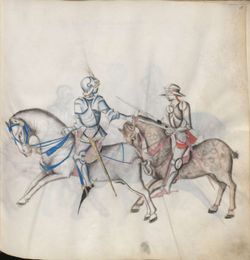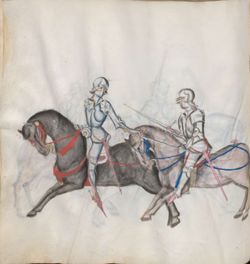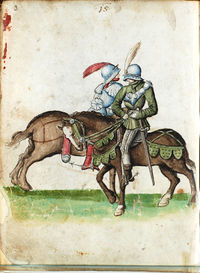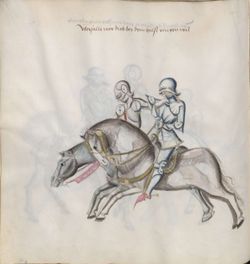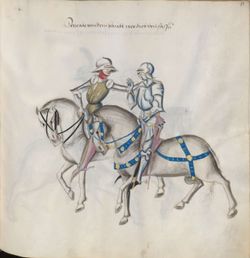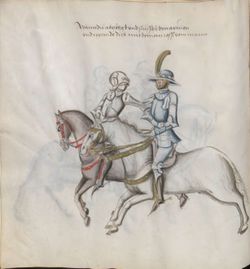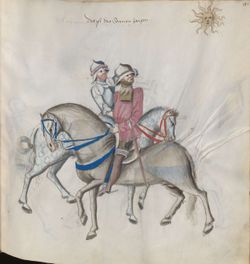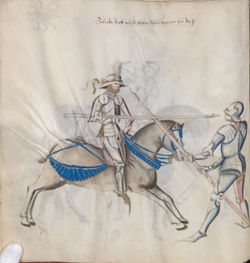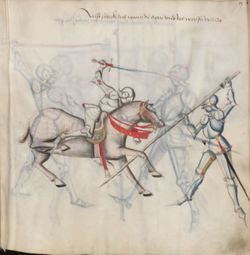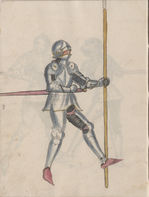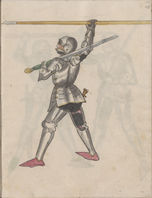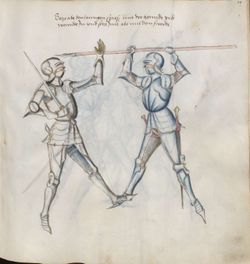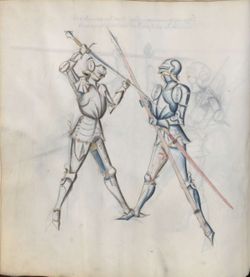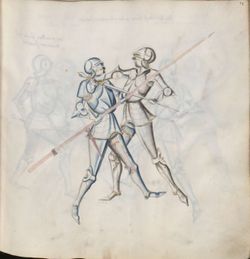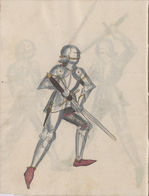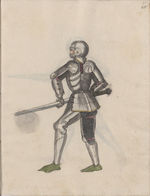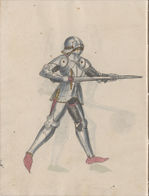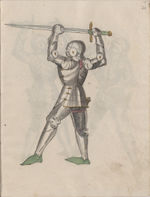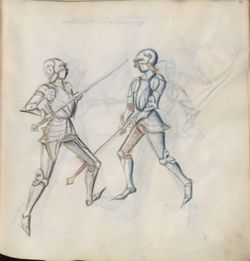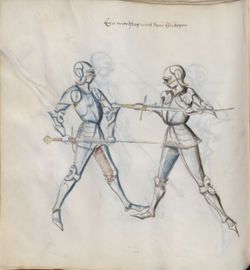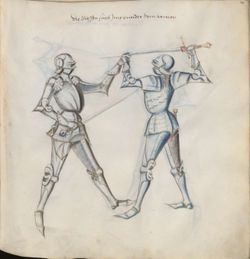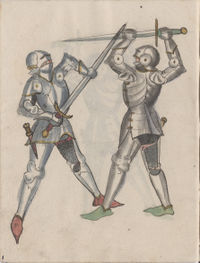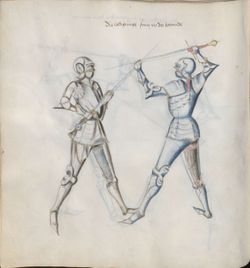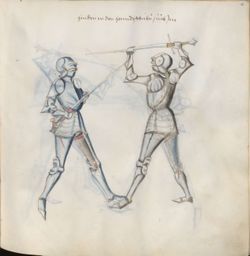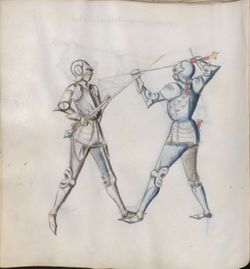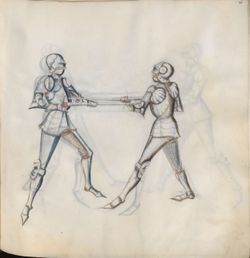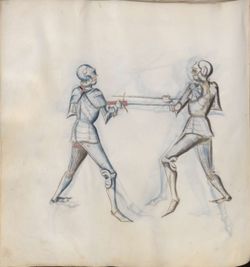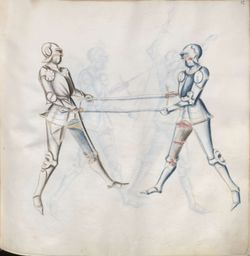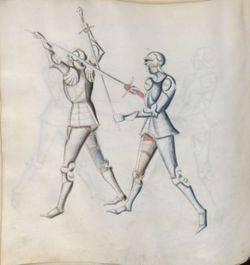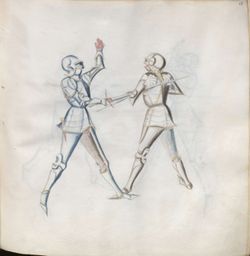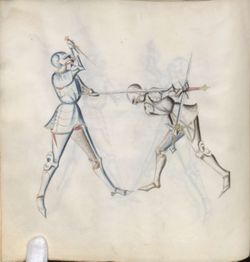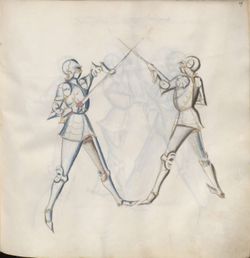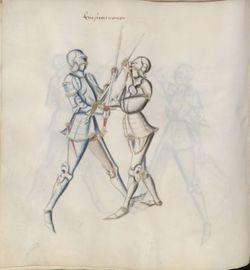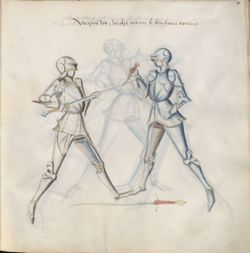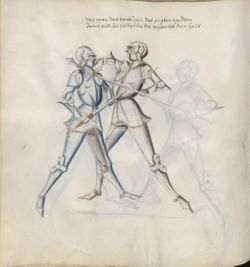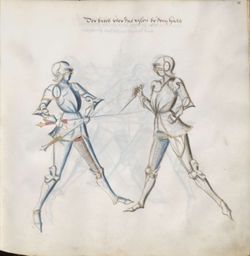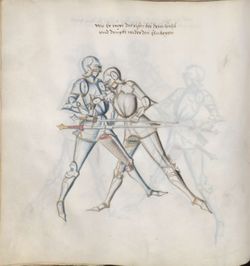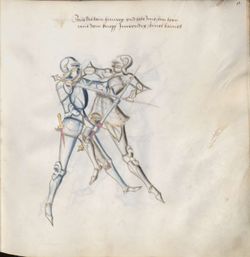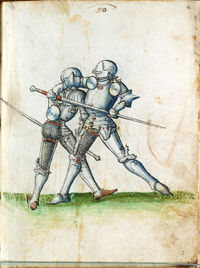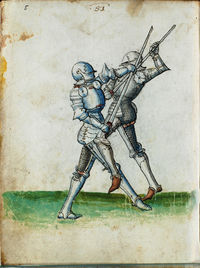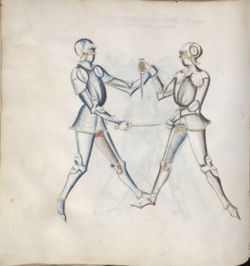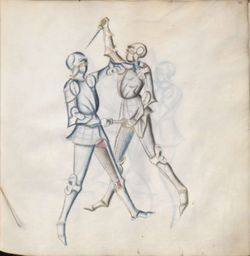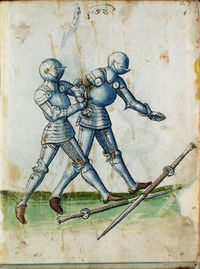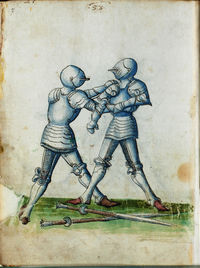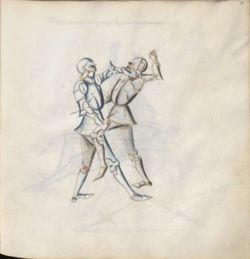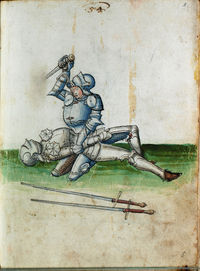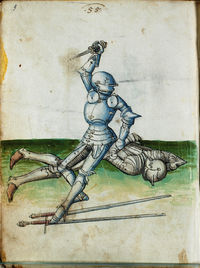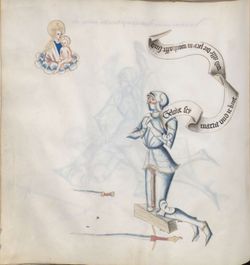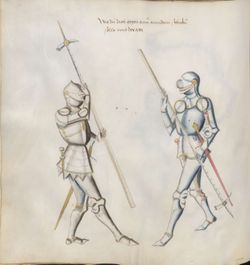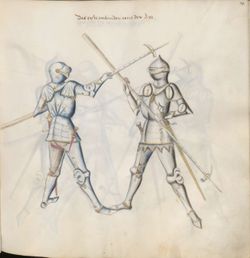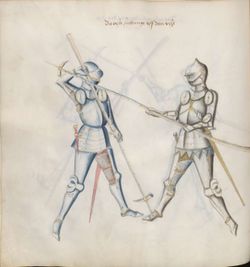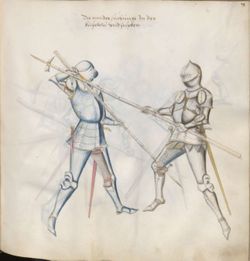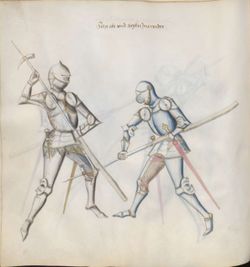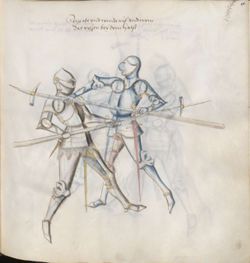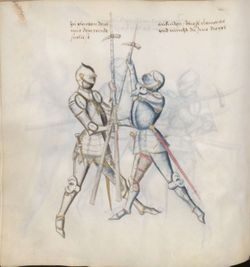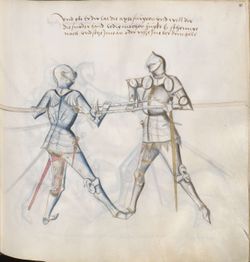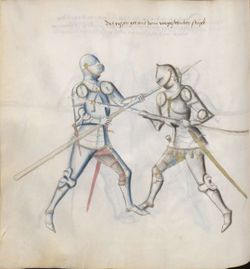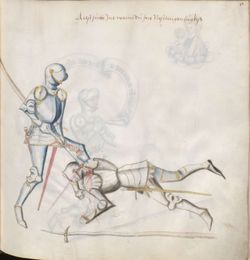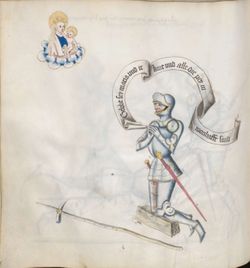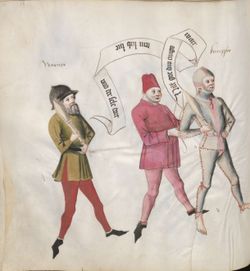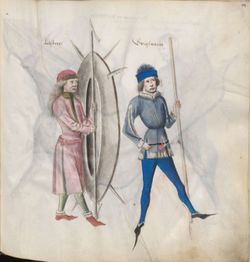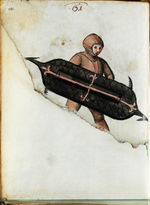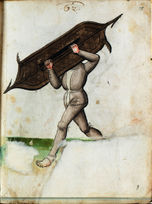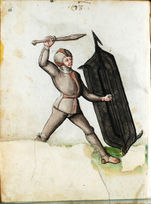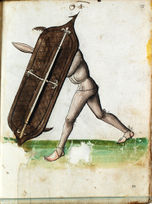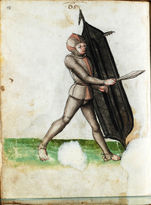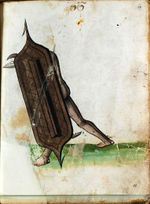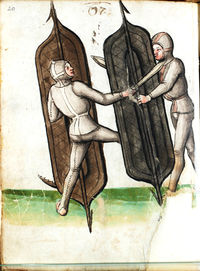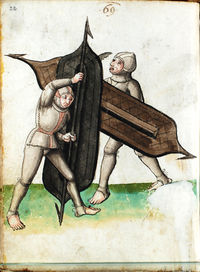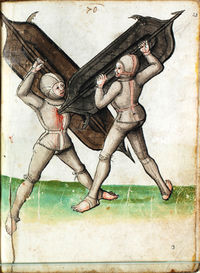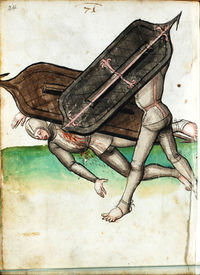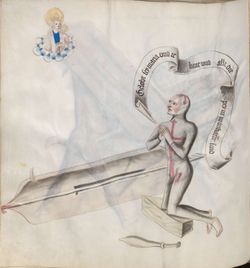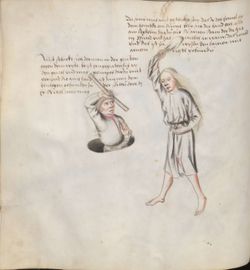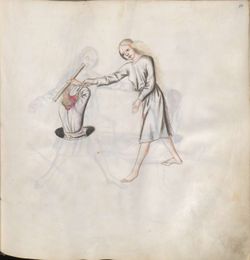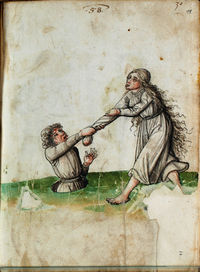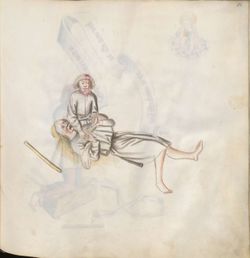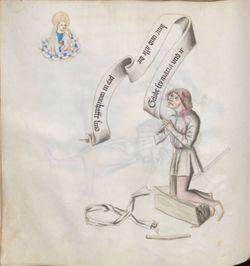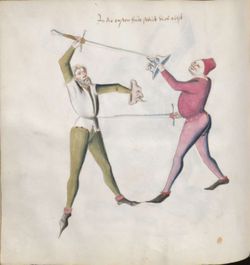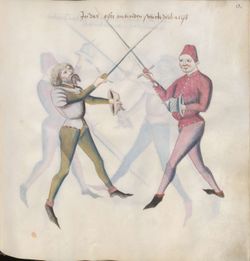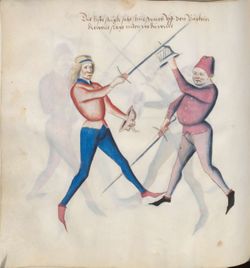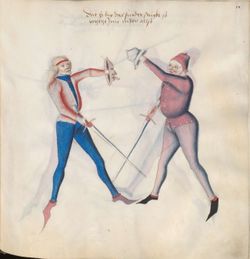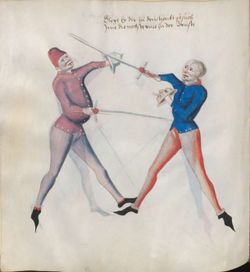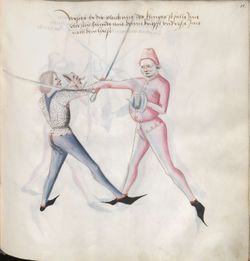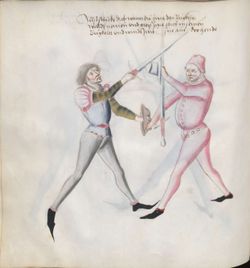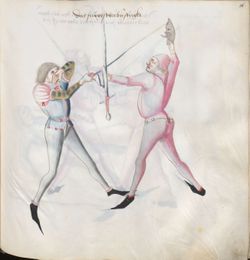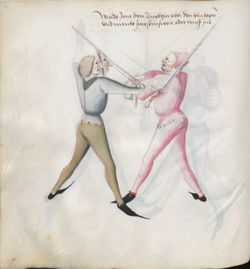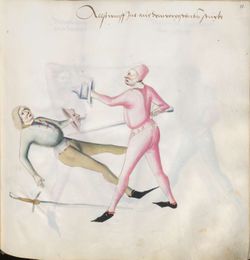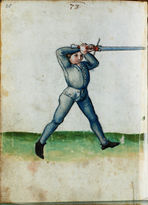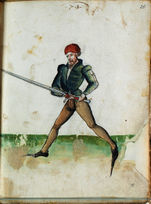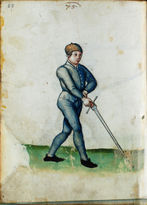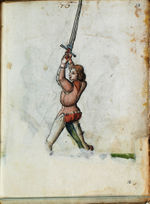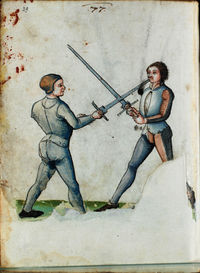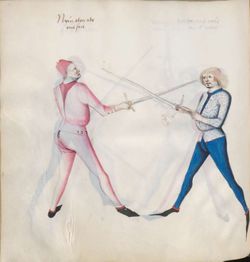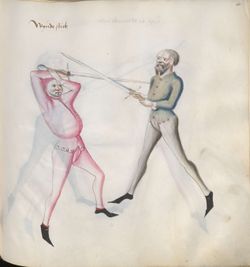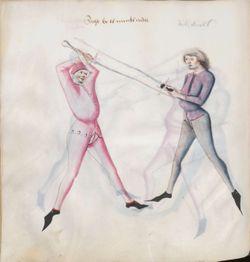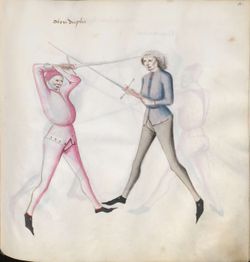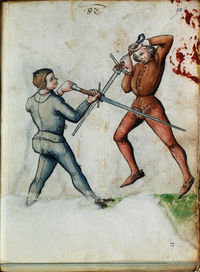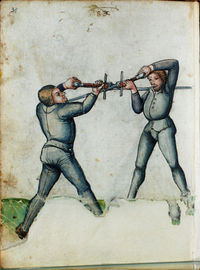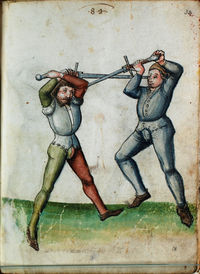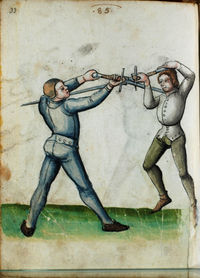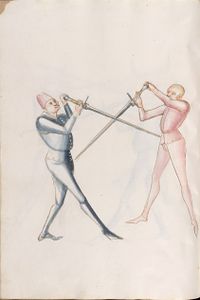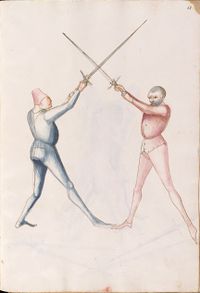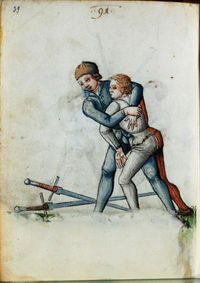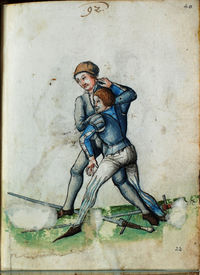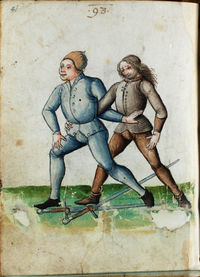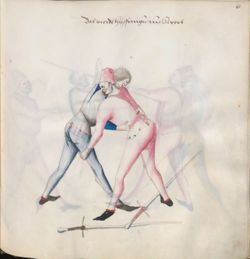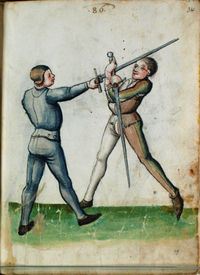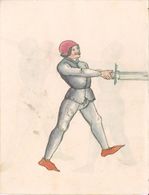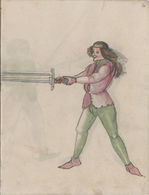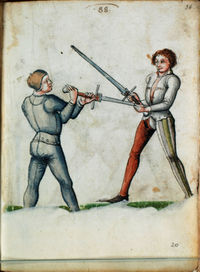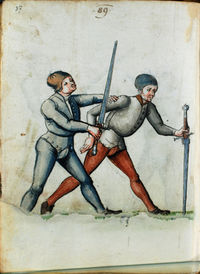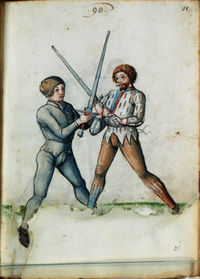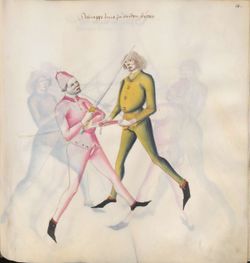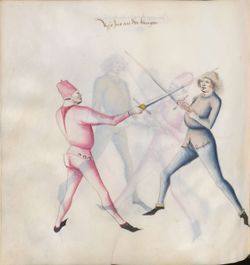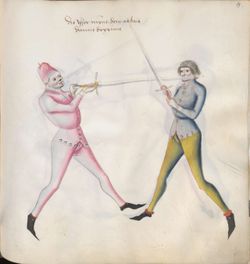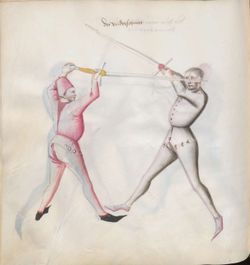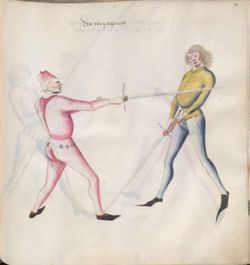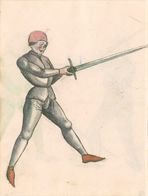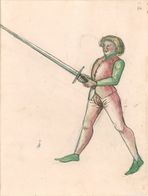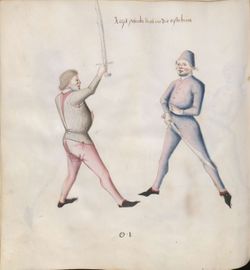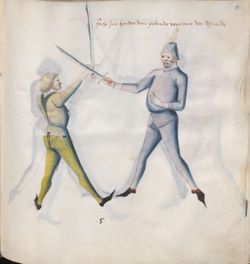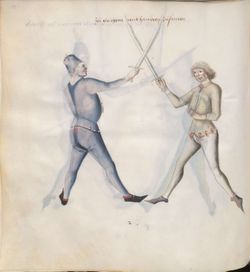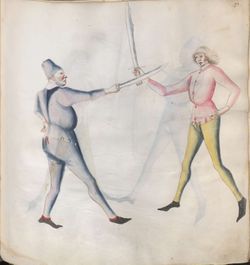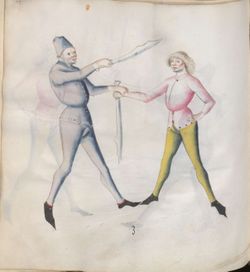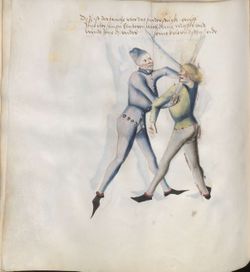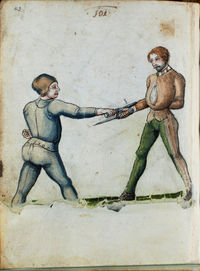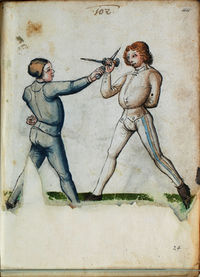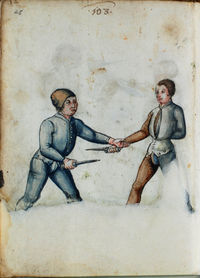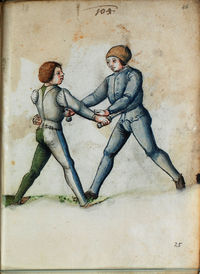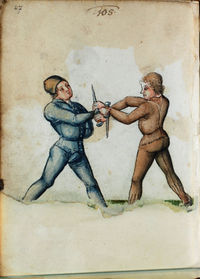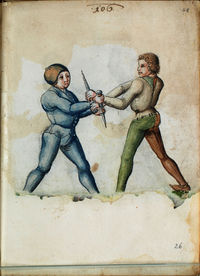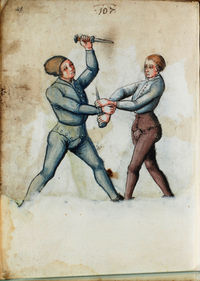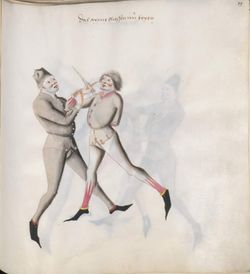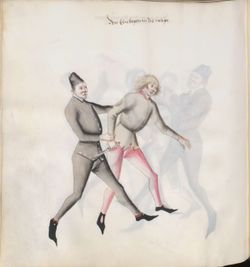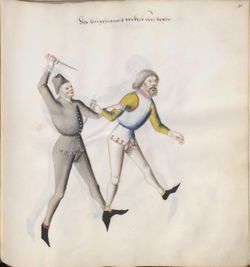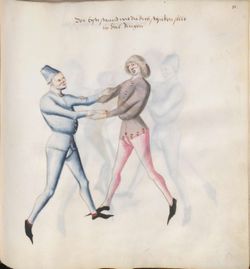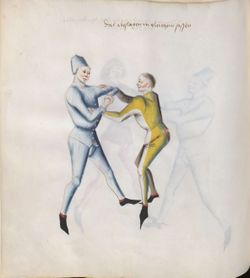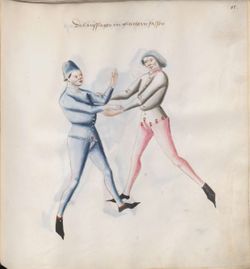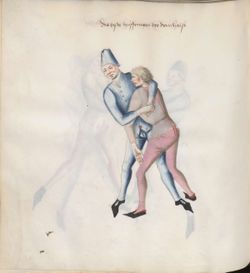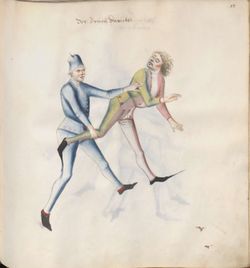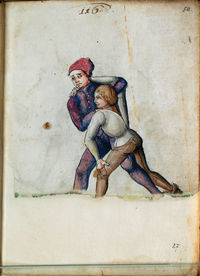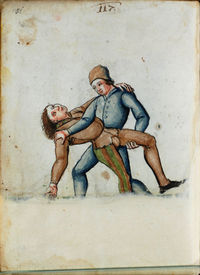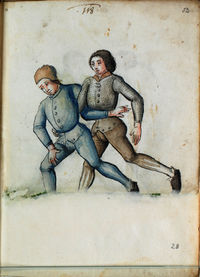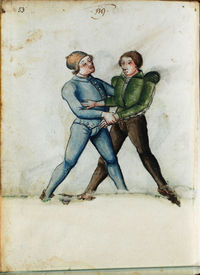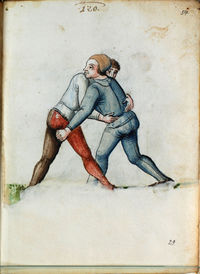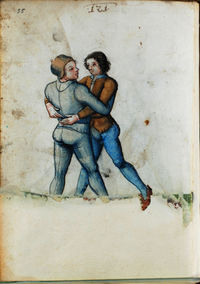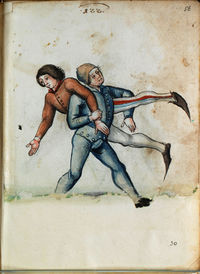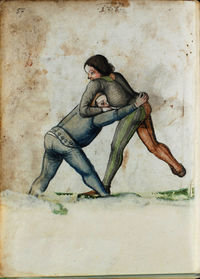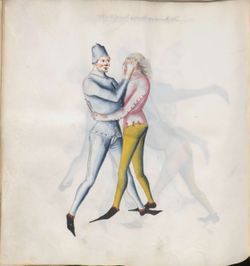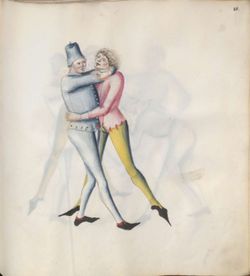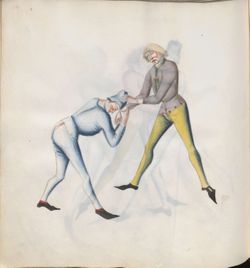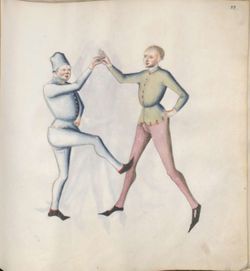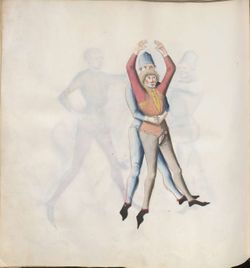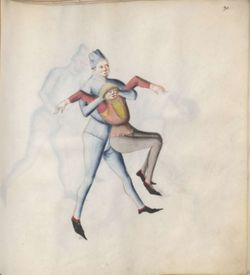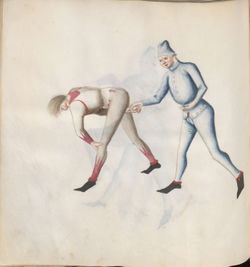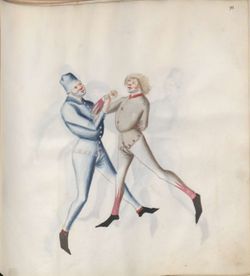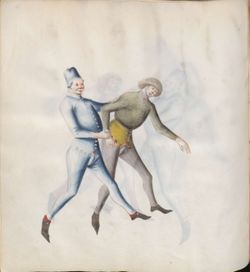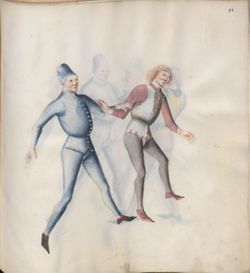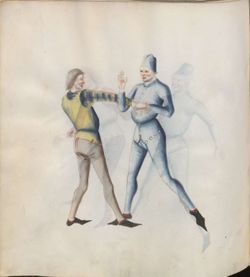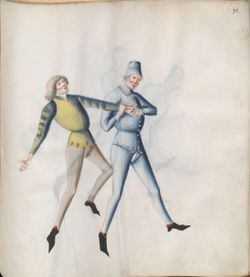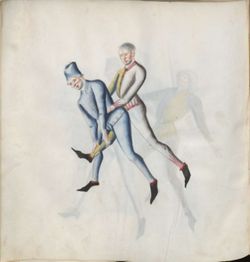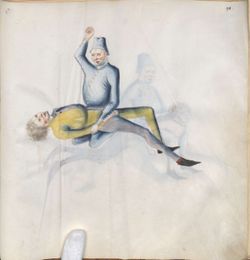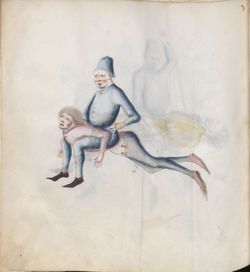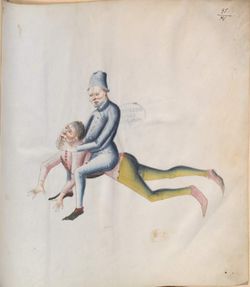|
|
You are not currently logged in. Are you accessing the unsecure (http) portal? Click here to switch to the secure portal. |
Difference between revisions of "Paulus Kal"
Cory Winslow (talk | contribs) |
|||
| Line 1,129: | Line 1,129: | ||
|- | |- | ||
! <p>Images<br/>from the [[Paulus Kal Fechtbuch (Cgm 1507)|Munich]] and [[Solothurner Fechtbuch (Cod.S.554)|Solothurn]] Versions</p> | ! <p>Images<br/>from the [[Paulus Kal Fechtbuch (Cgm 1507)|Munich]] and [[Solothurner Fechtbuch (Cod.S.554)|Solothurn]] Versions</p> | ||
| − | ! <p>{{rating|C}}<br/> | + | ! <p>{{rating|C}}<br/>[[Cory Winslow]]</p> |
! <p>[[Paulus Kal Fechtbuch (Cgm 1507)|Munich Version]] (ca. 1470){{edit index|Paulus Kal Fechtbuch (Cgm 1507)}}<br/>by [[Dierk Hagedorn]]</p> | ! <p>[[Paulus Kal Fechtbuch (Cgm 1507)|Munich Version]] (ca. 1470){{edit index|Paulus Kal Fechtbuch (Cgm 1507)}}<br/>by [[Dierk Hagedorn]]</p> | ||
! <p>[[Paulus Kal Fechtbuch (MS 1825)|Bologna Version]] (1460-1480){{edit index|Paulus Kal Fechtbuch (MS 1825)}}<br/>by [[Carsten Lorbeer]], [[Julia Lorbeer]], [[Andreas Meier]], [[Marita Wiedner]]</p> | ! <p>[[Paulus Kal Fechtbuch (MS 1825)|Bologna Version]] (1460-1480){{edit index|Paulus Kal Fechtbuch (MS 1825)}}<br/>by [[Carsten Lorbeer]], [[Julia Lorbeer]], [[Andreas Meier]], [[Marita Wiedner]]</p> | ||
| Line 1,139: | Line 1,139: | ||
|- | |- | ||
| [[File:Cgm 1507 52v.jpg|250px|center]] | | [[File:Cgm 1507 52v.jpg|250px|center]] | ||
| − | | <p> | + | | <p>In the first guard position yourself thus.</p> |
| {{paget|Page:Cgm 1507|52v|jpg}} | | {{paget|Page:Cgm 1507|52v|jpg}} | ||
| | | | ||
| Line 1,149: | Line 1,149: | ||
|- | |- | ||
| [[File:Cgm 1507 53r.jpg|250px|center]] | | [[File:Cgm 1507 53r.jpg|250px|center]] | ||
| − | | <p> | + | | <p>In the first binding-on position yourself thus.</p> |
| {{paget|Page:Cgm 1507|53r|jpg}} | | {{paget|Page:Cgm 1507|53r|jpg}} | ||
| | | | ||
| Line 1,159: | Line 1,159: | ||
|- | |- | ||
| [[File:Cgm 1507 53v.jpg|250px|center]] | | [[File:Cgm 1507 53v.jpg|250px|center]] | ||
| − | | <p>The first | + | | <p>The first technique. Catch his strike on your buckler, meanwhile strike low where you want.</p> |
| {{paget|Page:Cgm 1507|53v|jpg}} | | {{paget|Page:Cgm 1507|53v|jpg}} | ||
| | | | ||
| Line 1,169: | Line 1,169: | ||
|- | |- | ||
| [[File:Cgm 1507 54r.jpg|250px|center]] | | [[File:Cgm 1507 54r.jpg|250px|center]] | ||
| − | | <p>If he | + | | <p>If he does the previous technique to you, then parry him low thus.</p> |
| {{paget|Page:Cgm 1507|54r|jpg}} | | {{paget|Page:Cgm 1507|54r|jpg}} | ||
| | | | ||
| Line 1,179: | Line 1,179: | ||
|- | |- | ||
| [[File:Cgm 1507 54v.jpg|250px|center]] | | [[File:Cgm 1507 54v.jpg|250px|center]] | ||
| − | | <p>If he strikes | + | | <p>If he strikes to your head, then search for the nearest touch to his breast .</p> |
| {{paget|Page:Cgm 1507|54v|jpg}} | | {{paget|Page:Cgm 1507|54v|jpg}} | ||
| | | | ||
| Line 1,189: | Line 1,189: | ||
|- | |- | ||
| [[File:Cgm 1507 55r.jpg|250px|center]] | | [[File:Cgm 1507 55r.jpg|250px|center]] | ||
| − | | <p>If he | + | | <p> If he parries you simultaneously with the blade, then fall over his hand with your pommel and tear after his neck.</p> |
| {{paget|Page:Cgm 1507|55r|jpg}} | | {{paget|Page:Cgm 1507|55r|jpg}} | ||
| {{paget|Page:MS 1825|15r|jpg|blk=1}} | | {{paget|Page:MS 1825|15r|jpg|blk=1}} | ||
| Line 1,199: | Line 1,199: | ||
|- | |- | ||
| [[File:Cgm 1507 55v.jpg|250px|center]] | | [[File:Cgm 1507 55v.jpg|250px|center]] | ||
| − | | <p> | + | | <p>Position yourself thus when you want to take his buckler, and grip him inverted in his buckler and wind it from his hand.</p> |
| {{paget|Page:Cgm 1507|55v|jpg}} | | {{paget|Page:Cgm 1507|55v|jpg}} | ||
| {{paget|Page:MS 1825|15v|jpg|blk=1}} | | {{paget|Page:MS 1825|15v|jpg|blk=1}} | ||
| Line 1,209: | Line 1,209: | ||
|- | |- | ||
| [[File:Cgm 1507 56r.jpg|250px|center]] | | [[File:Cgm 1507 56r.jpg|250px|center]] | ||
| − | | <p>The | + | | <p>The previously described technique.</p> |
| {{paget|Page:Cgm 1507|56r|jpg}} | | {{paget|Page:Cgm 1507|56r|jpg}} | ||
| {{paget|Page:MS 1825|16r|jpg|blk=1}} | | {{paget|Page:MS 1825|16r|jpg|blk=1}} | ||
| Line 1,229: | Line 1,229: | ||
|- | |- | ||
| [[File:Cgm 1507 57r.jpg|250px|center]] | | [[File:Cgm 1507 57r.jpg|250px|center]] | ||
| − | | <p> | + | | <p>Thus he is thrown from the previously described technique.</p> |
| {{paget|Page:Cgm 1507|57r|jpg}} | | {{paget|Page:Cgm 1507|57r|jpg}} | ||
| {{paget|Page:MS 1825|17r|jpg|blk=1}} | | {{paget|Page:MS 1825|17r|jpg|blk=1}} | ||
Revision as of 15:19, 30 September 2015
| Paulus Kal | |
|---|---|
 | |
| Born | ca.1420s Dingolfing, Germany |
| Died | after 1485 |
| Occupation |
|
| Patron |
|
| Movement | Society of Liechtenauer |
| Influences | |
| Influenced | Peter Falkner (?) |
| Genres | |
| Language | |
| Archetype(s) | |
| Manuscript(s) |
|
| First printed english edition |
Tobler, 2006 |
| Concordance by | Michael Chidester, Carsten Lorbeer, Julia Lorbeer, Andreas Meier, Marita Wiedner |
| Translations | |
Paulus Kal was a 15th century German fencing master. He wrote that he studied martial arts under Hans Stettner von Mörnsheim, and was an initiate of the tradition of Johannes Liechtenauer. He was also attached as Schirrmeister to three different courts in his career, serving in various military capacities including commanding men in at least three campaigns.[1] Perhaps his most significant legacy is an honor role of masters which he styled the Society of Liechtenauer (Geselschaft Liechtenauers). While many of these masters remain unknown, the several wrote treatises of their own and Kal's list stands as an independent confirmation of their connection to the grand master. Kal's treatise is also of interest in that it represents the first attempt to illustrate Liechtenauer's Recital (Zettel).
Little is known of Kal's early life, but from 1440 to ca. 1449 he served Ludwig IV "the Gentle" of the Wittelsbach, Count Palatine of the Rhine. In 1448, while in the count's service he participated in the defense Nuremberg, commanding a unit of wheel cannons below the gates.[2] The Nuremberg Council notes from 17 March 1449 mention that he had broken the peace of the city at that time by drawing his weapons.[2]
Kal entered the service of Ludwig IX "the Rich" of the House of Wittelsbach, Duke of Bavaria-Landshut, on 29 September 1450.[1] In 1461, he is mentioned commanding a unit of 12 marksmen.[2] From 1465 to 1475, he seems to have also maintained a secondary occupation as a toll collector in Dingolfing.[2] In November 1468, he participated in military actions on the castle Saldenburg, which was successfully taken on 4 December.[2] Kal is listed as a guest at the wedding of Ludwig's son George,[2] and continued in the duke's service until his death on 18 January 1479. Paulus Kal created the first two versions of his treatise while in the service of Ludwig IX, an uncaptioned version as well as a more elaborate presentation copy including brief explanations in German for most devices (many extracted from Liechtenauer's Recital).
On 12 February 1480, Paulus Kal entered the service of Sigismund of the House of Habsburg, Archduke of Austria and Tyrol.[1] Kal acted as one of the archduke's witnesses at a number of interrogations held on 17 October 1485 in Innsbruck, related to the witch trials being conducted by Heinrich Kramer at that time.[2] This is the final time that Kal's name appears in the histories. Several copies of Kal's treatise were created during the 1480s and 90s, but the only one which shows any indication of Kal's personal involvement is the extensive MS KK5126.
In total, Paulus Kal's teachings are preserved in at least six manuscripts written between 1460 and 1514. Aside from the three already mentioned, two other fragmentary, text-less copies also exist (one copied from the Bologna, and the other from an unknown source). A sixth version was sold at auction in Italy during the 20th century as individual leaves; this copy contains single-word captions in Latin or Italian and was likely based on either the Bologna or Vienna. In addition, Paulus Hector Mair based content in several sections of the Munich and Vienna versions of his Opus Amplissimum de Arte Athletica on Kal's treatise. Rather than using Kal's descriptions (if the copy he used had them), Mair wrote his own extensive commentary on the images. The precise set of images Mair drew upon do not appear in any of the six extant manuscripts, which may signify that there was once a seventh copy of Kal's work which has since been lost.
Contents
Treatise
Preface
Duel Between a Man and a Woman
Copyright and License Summary
Additional Resources
- Studer, Charles. Das Solothurner Fechtbuch. Zentralbibliothek Solothurn, 1989.
- Tobler, Christian Henry. In Saint George's Name: An Anthology of Medieval German Fighting Arts. Wheaton, IL: Freelance Academy Press, 2010. ISBN 978-0-9825911-1-6
- Tobler, Christian Henry. In Service of the Duke: The 15th Century Fighting Treatise of Paulus Kal. Highland Village, TX: Chivalry Bookshelf, 2006. ISBN 978-1-891448-25-0
References
- ↑ Jump up to: 1.0 1.1 1.2 Rainer Welle. "… und wisse das alle höbischeit kompt von deme ringen. Der Ringkampf als adelige Kunst im 15. Und 16. Jahrhundert. Eine sozialhistorische und bewegungsbiographische Interpretation aufgrund der handschriften und gedruckten Ringlehren des Spätmittelalters." Forum für Sozialgeschichte 4. Pfaffenweiler, 1993. pp 243-253.
- ↑ Jump up to: 2.0 2.1 2.2 2.3 2.4 2.5 2.6 Jens P. Kleinau. Paulus Kal, a Schirrmeister. Hans Talhoffer ~ A Historical Martial Arts blog by Jens P. Kleinau, 2011. Retrieved 17 August 2015.

